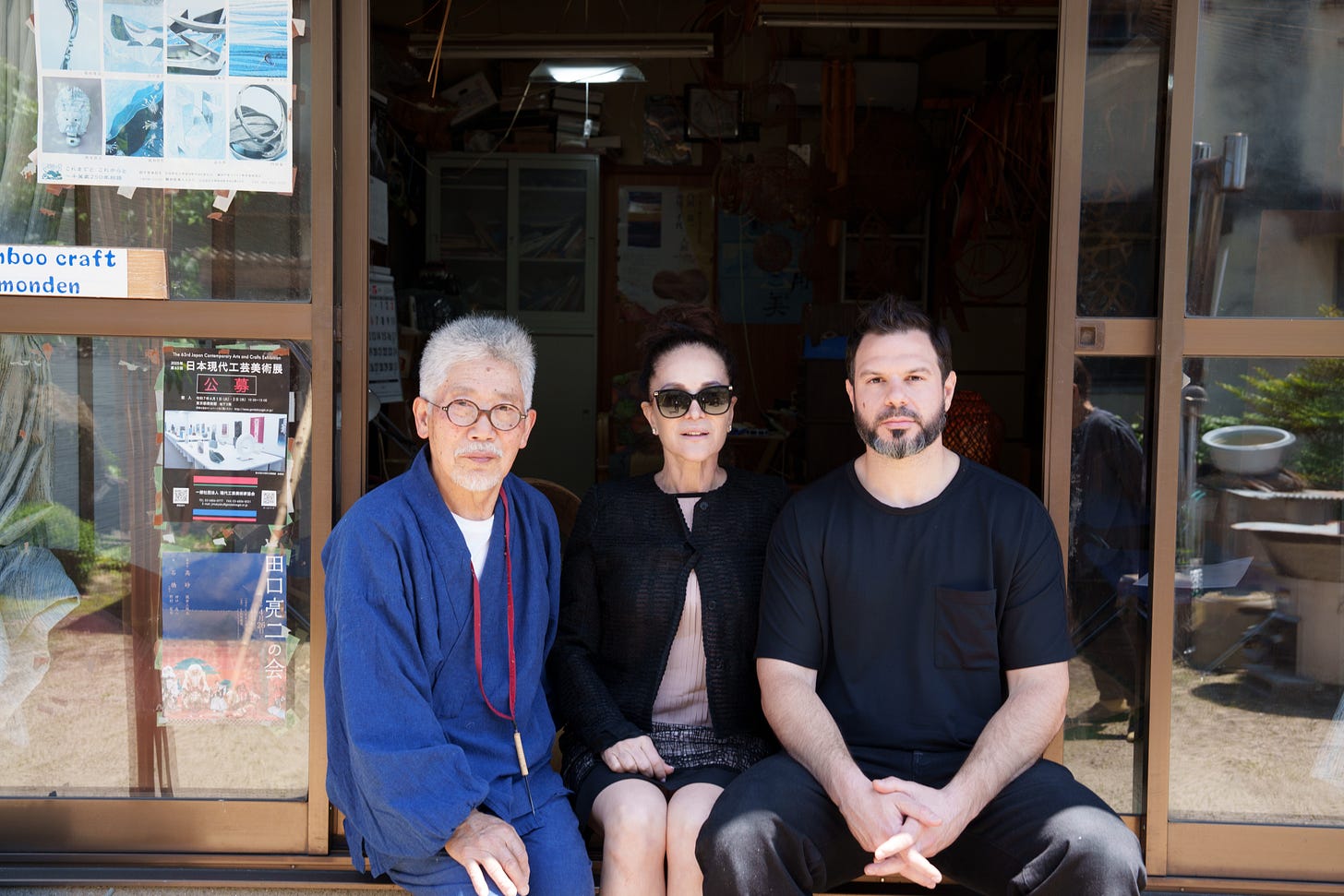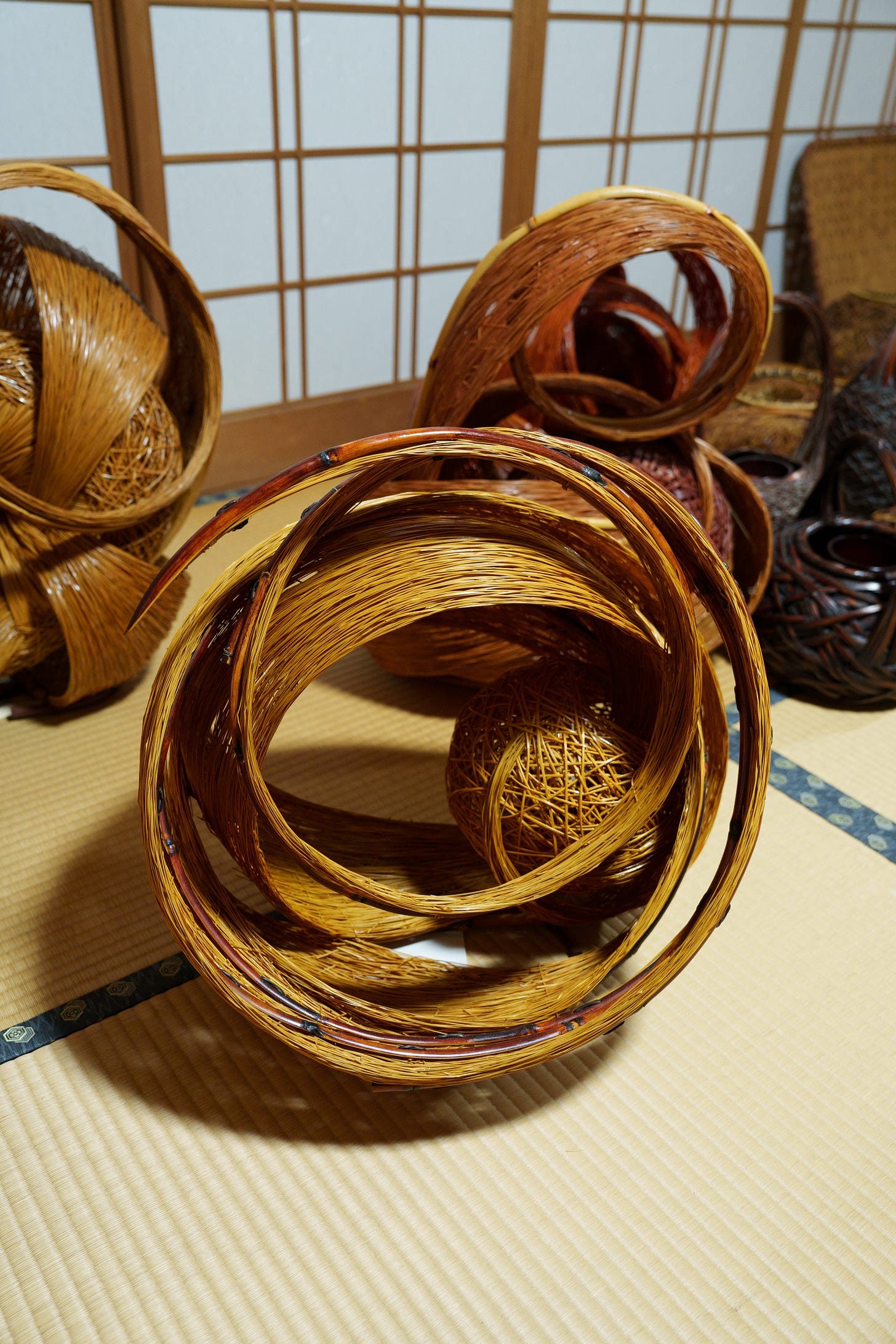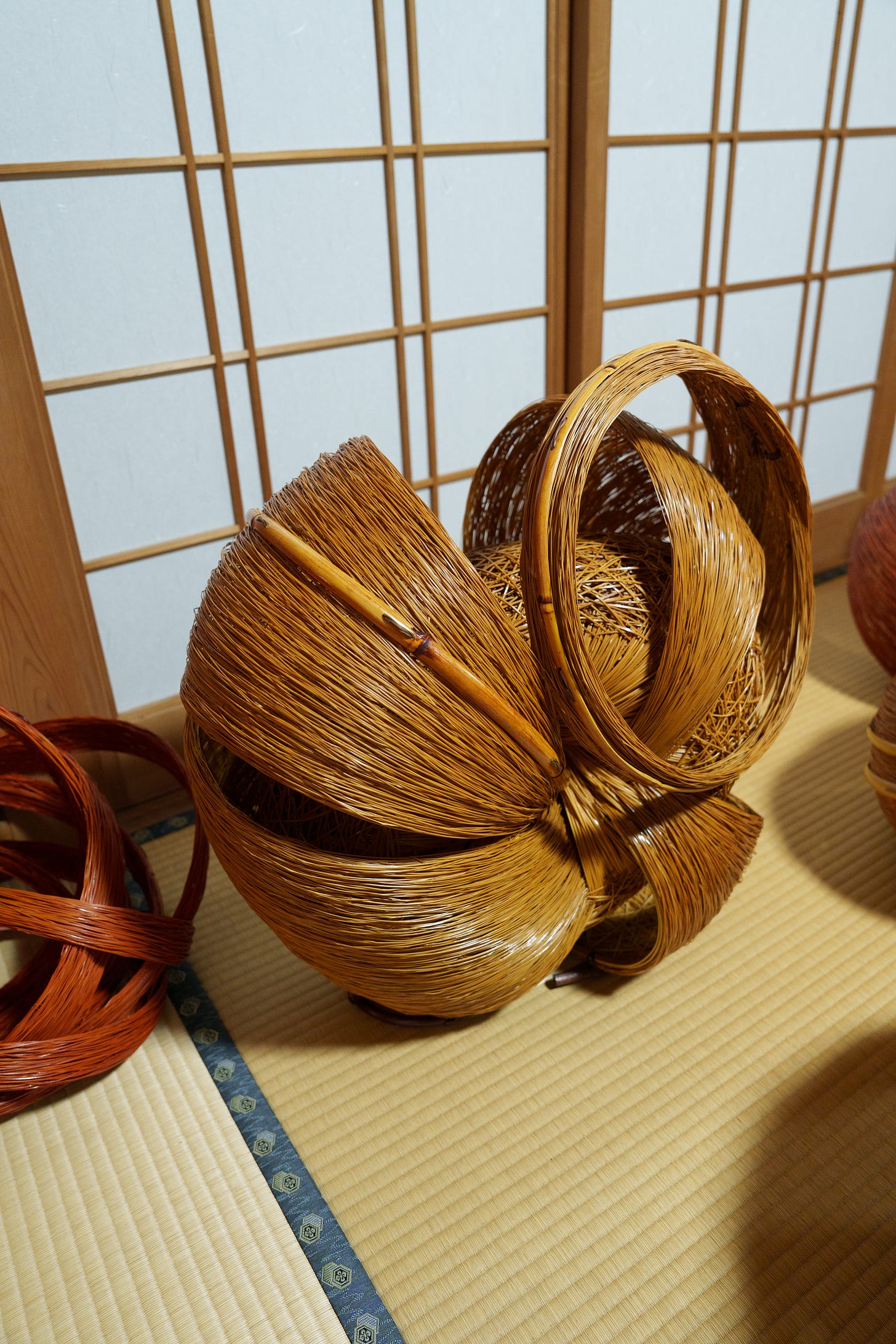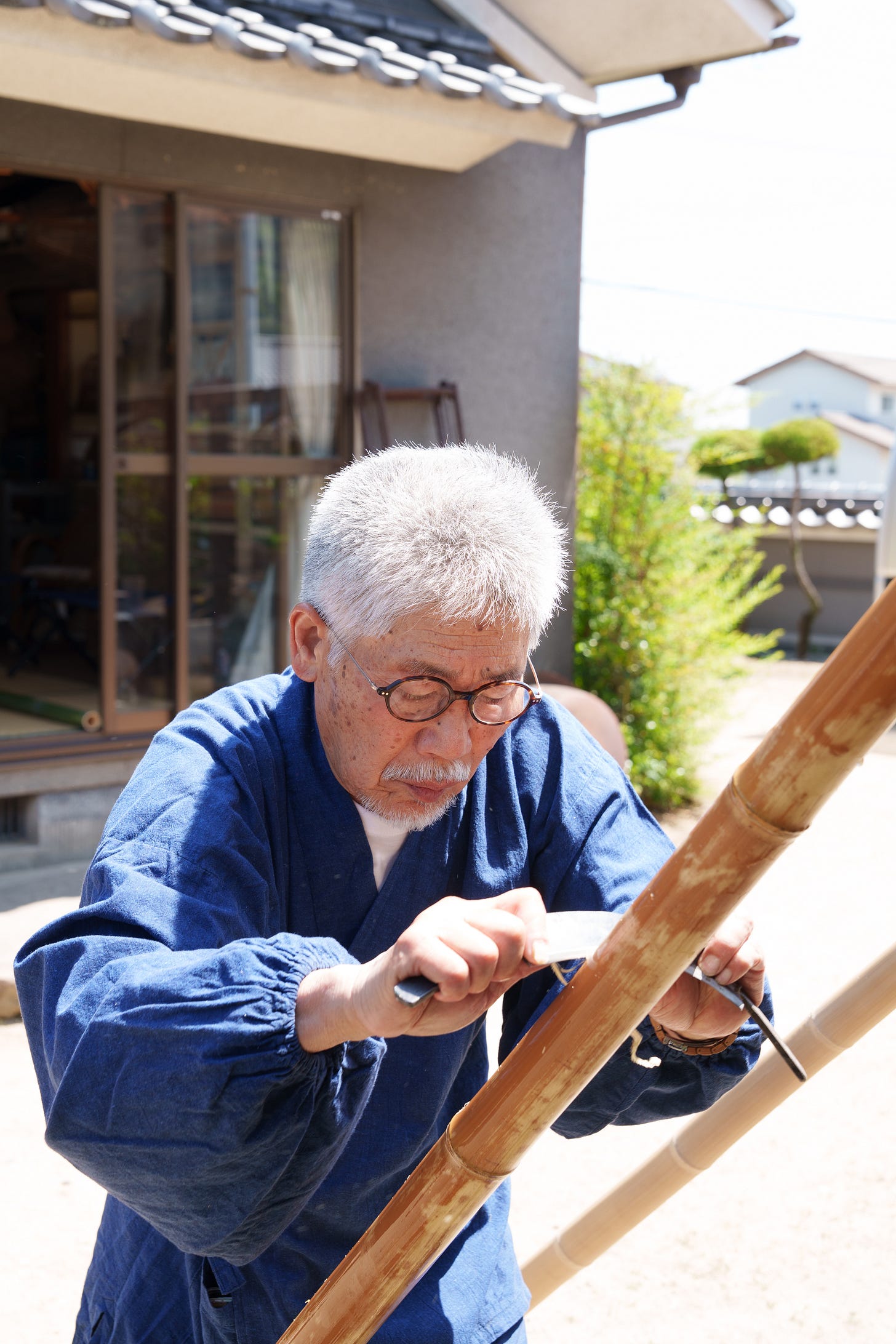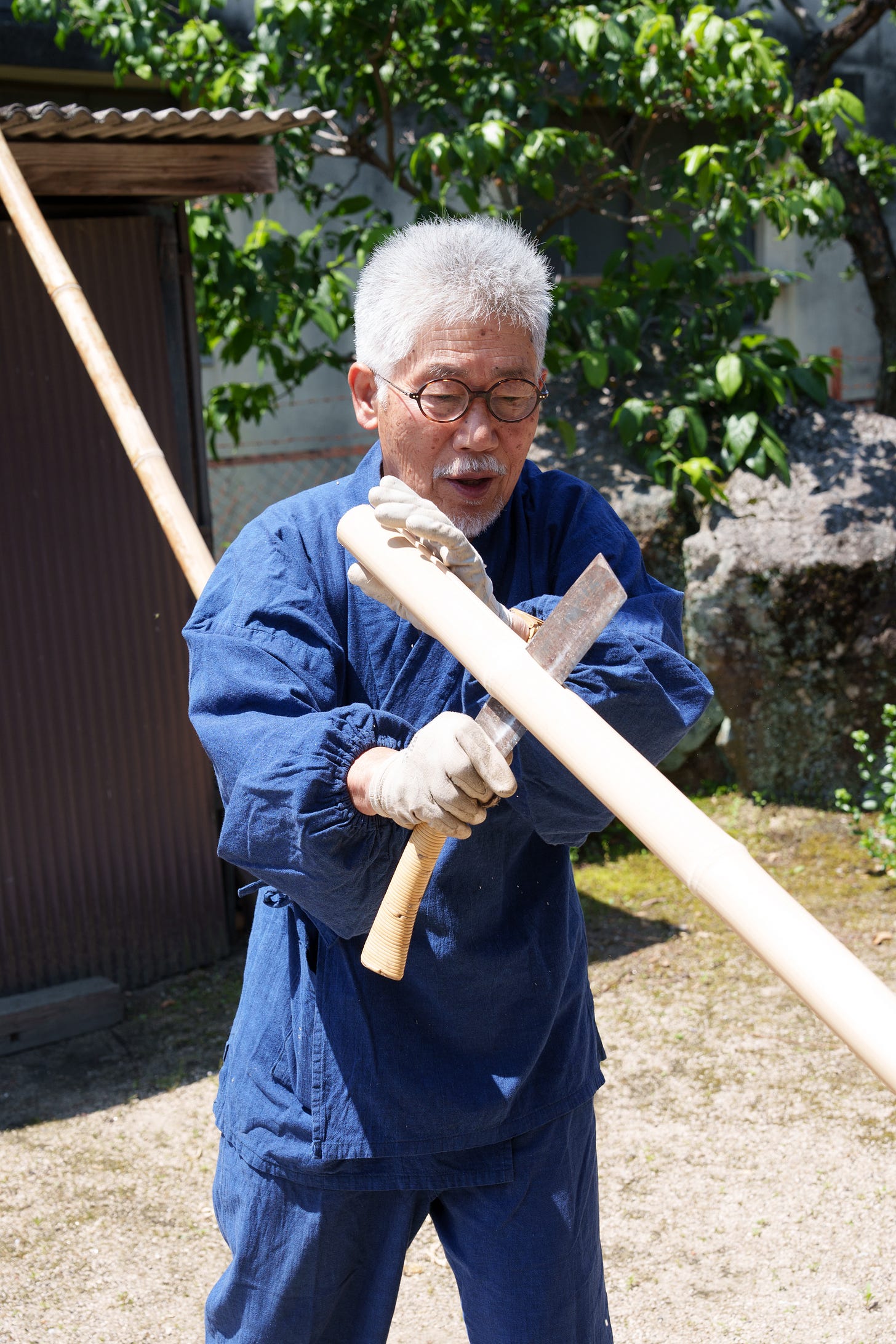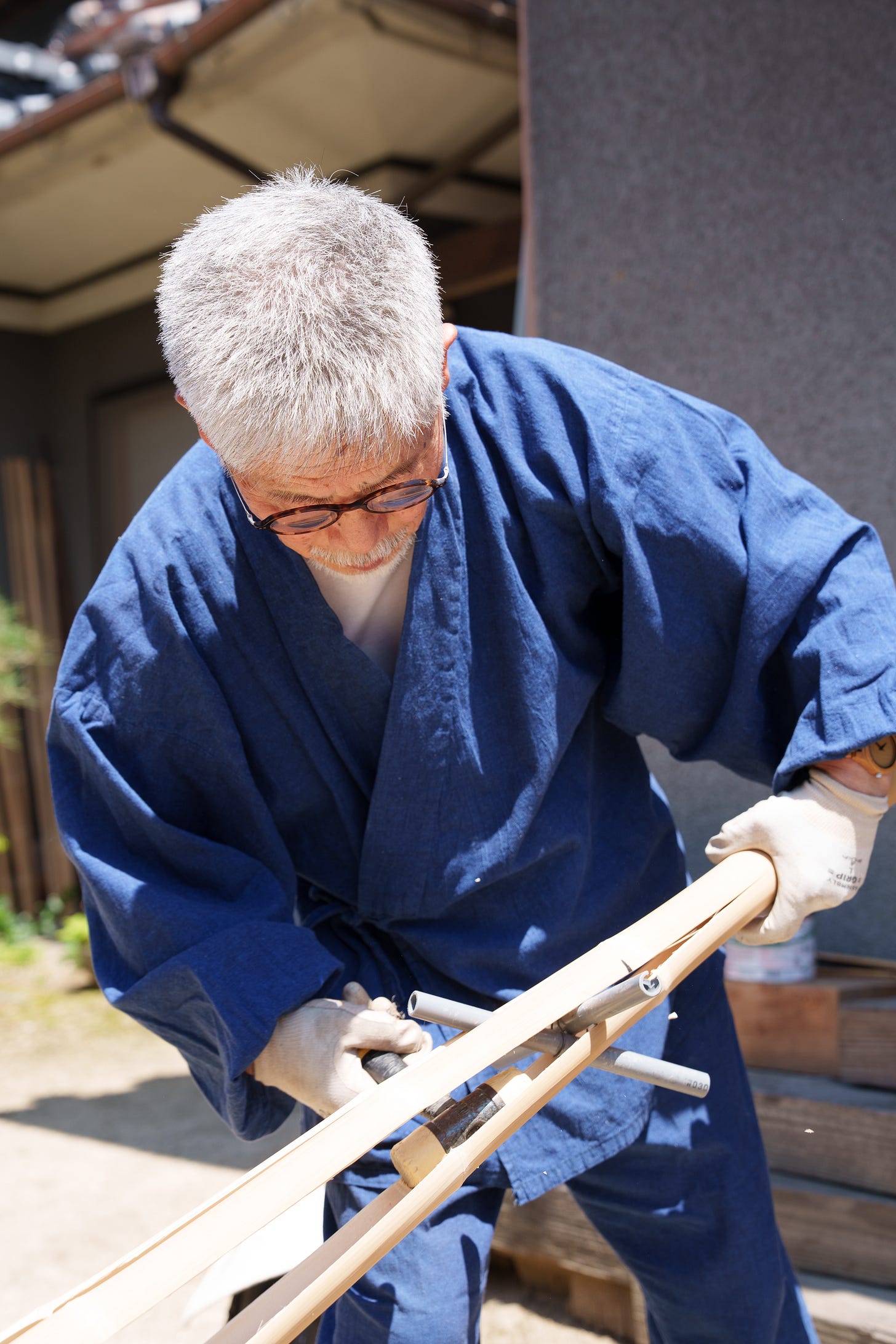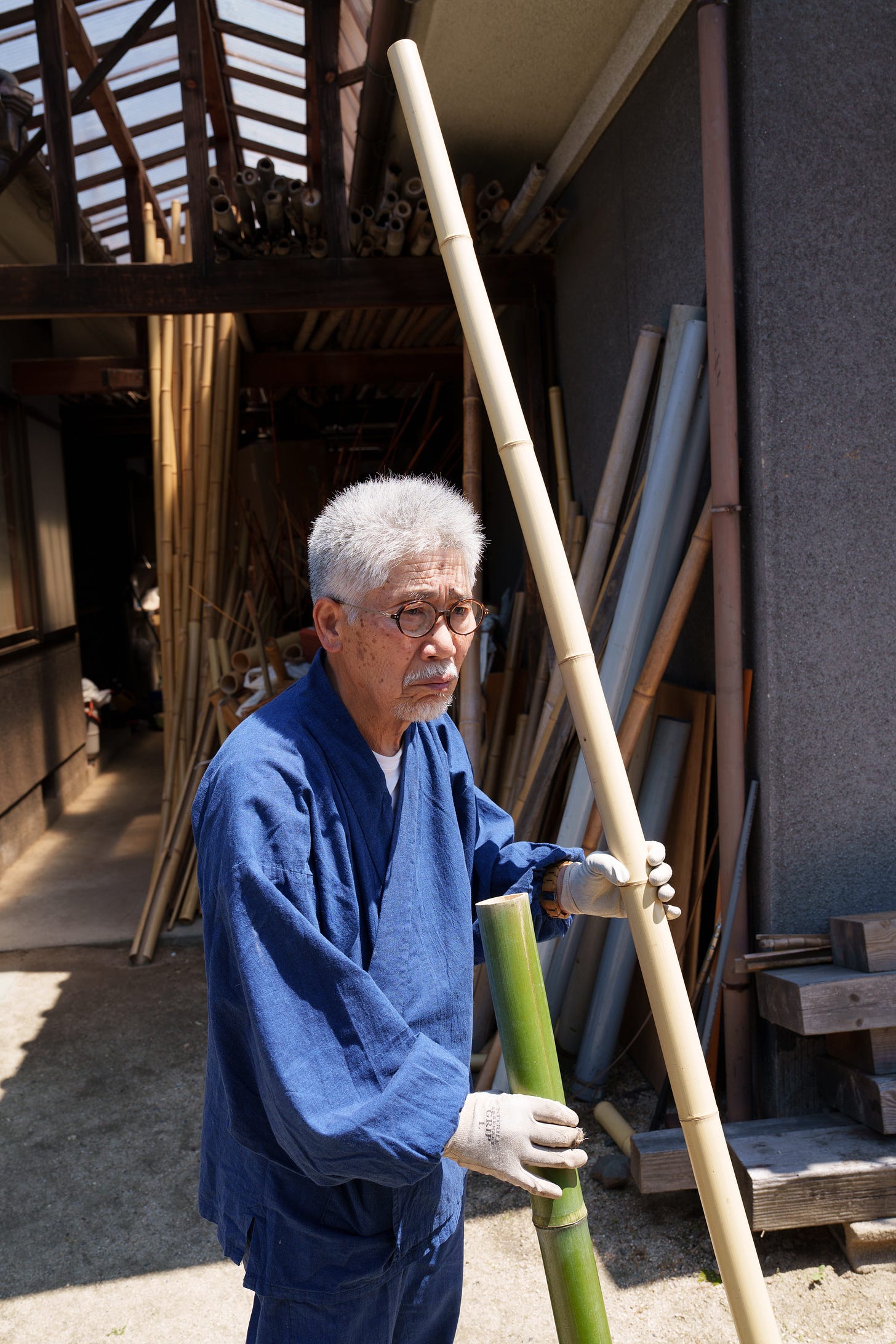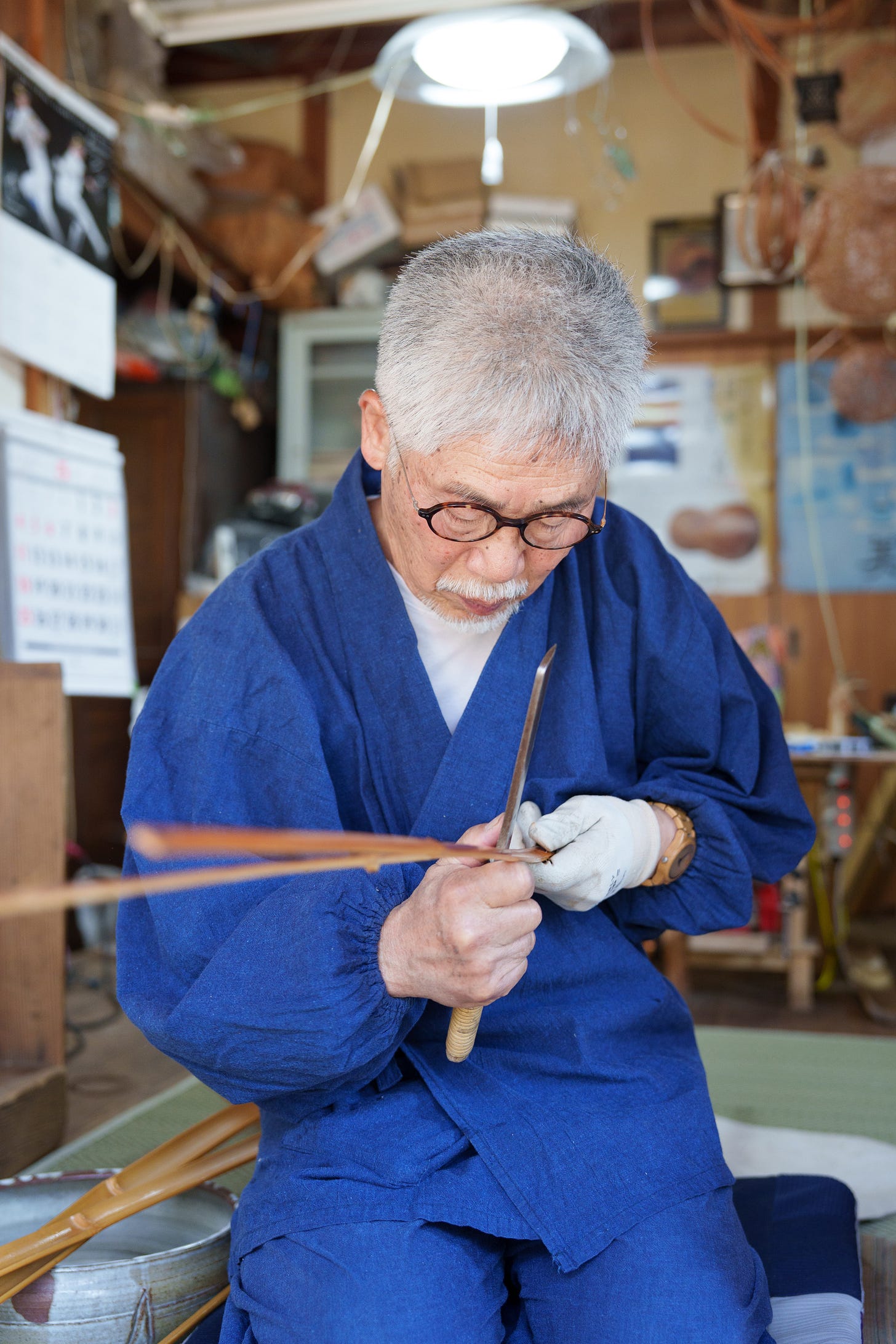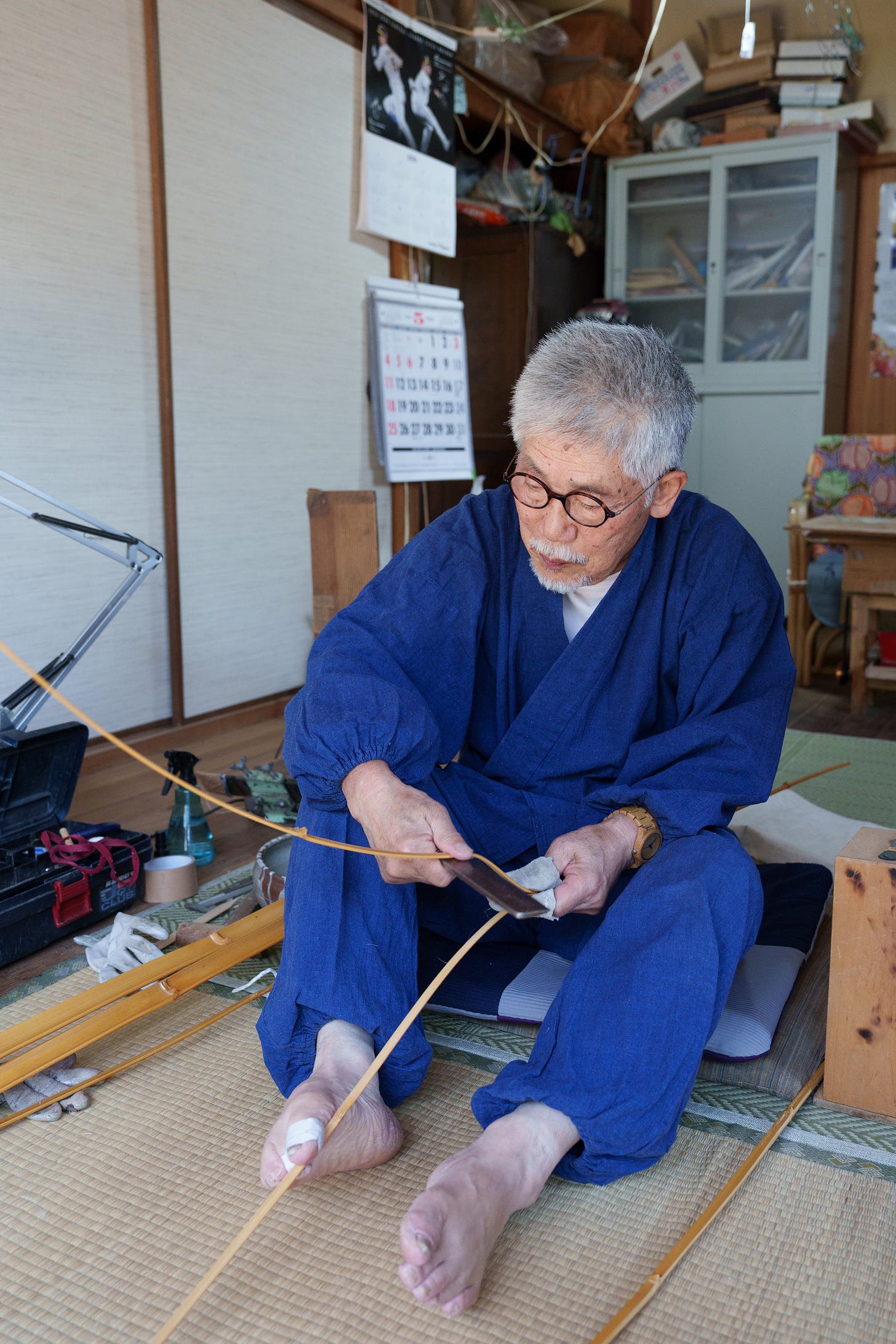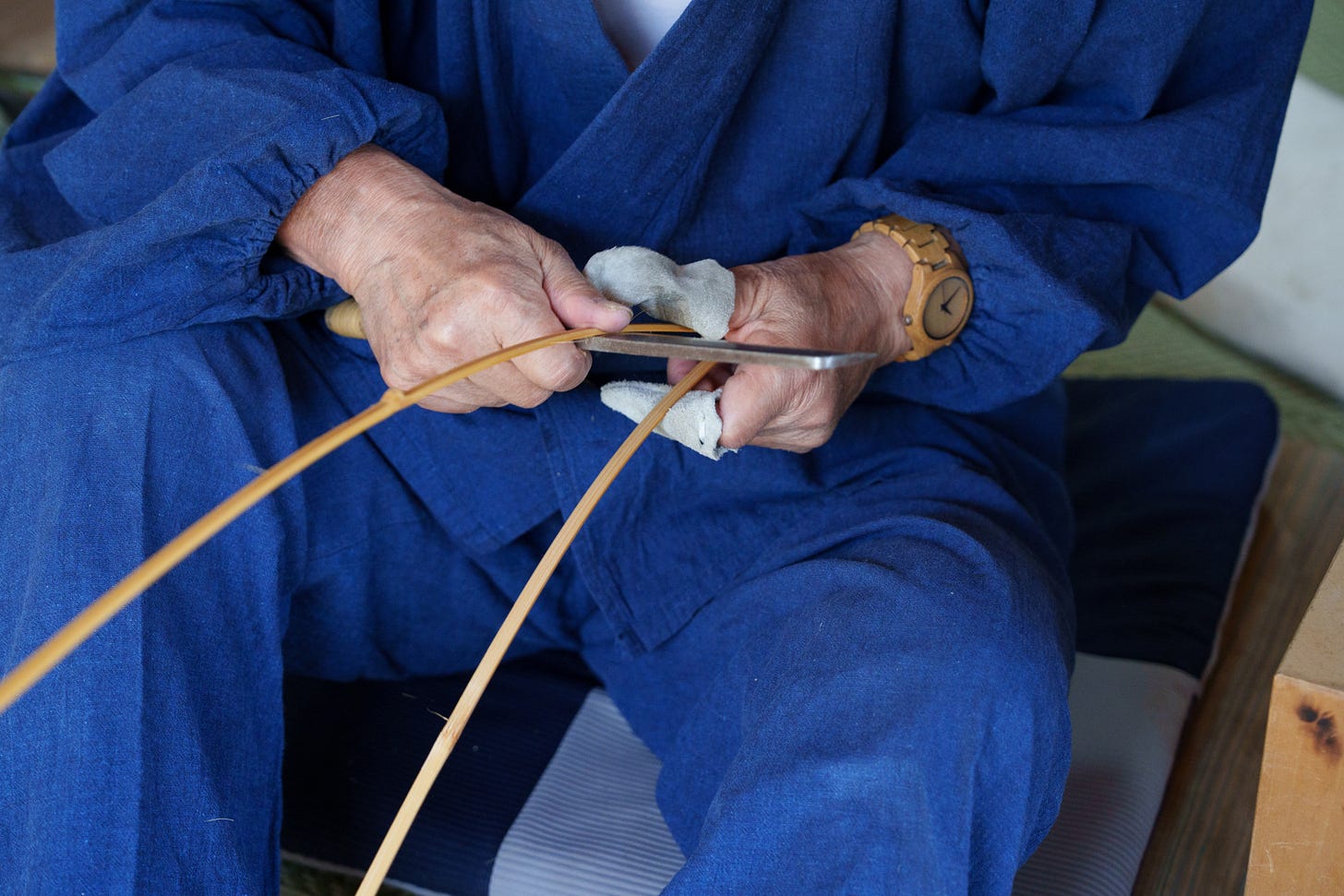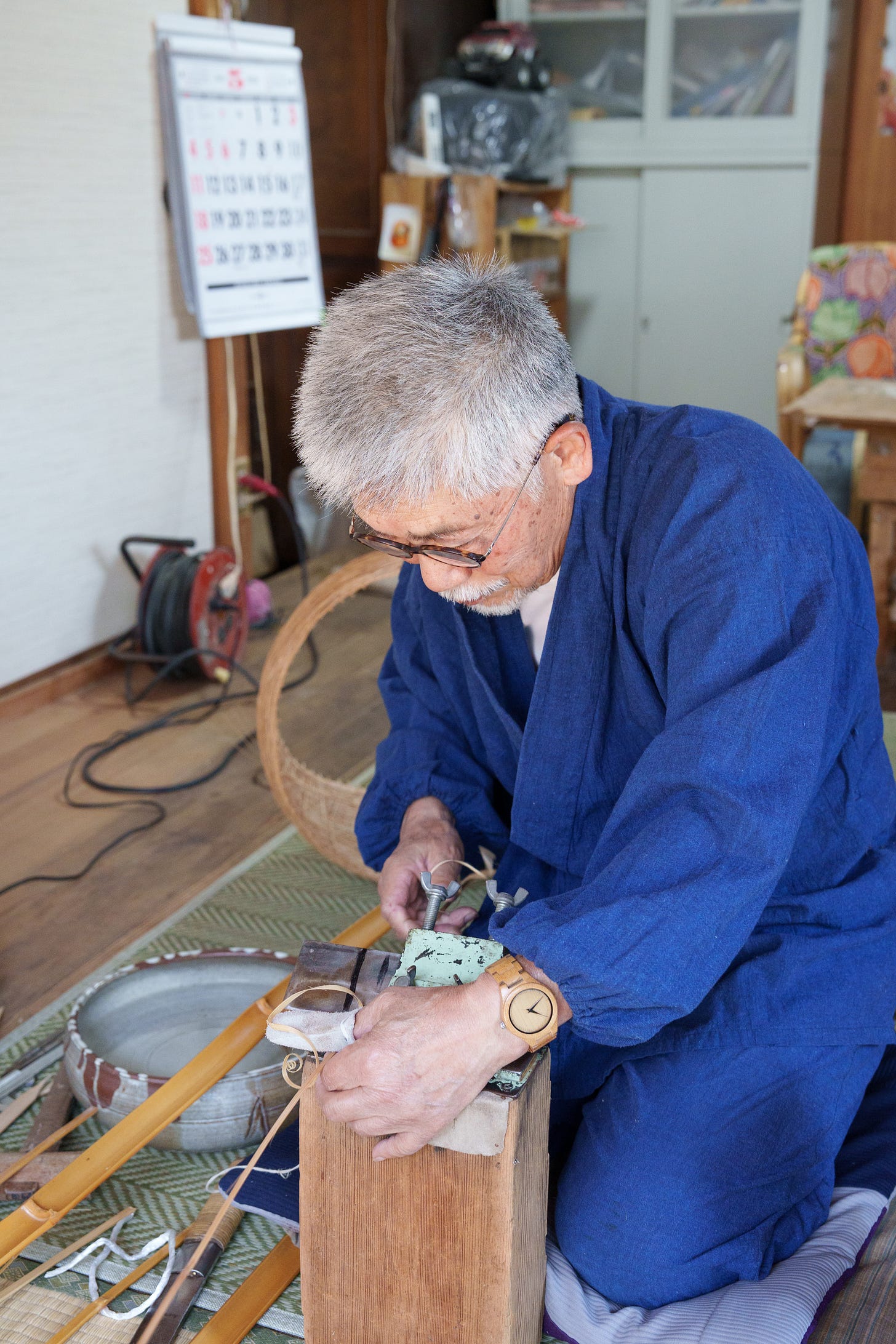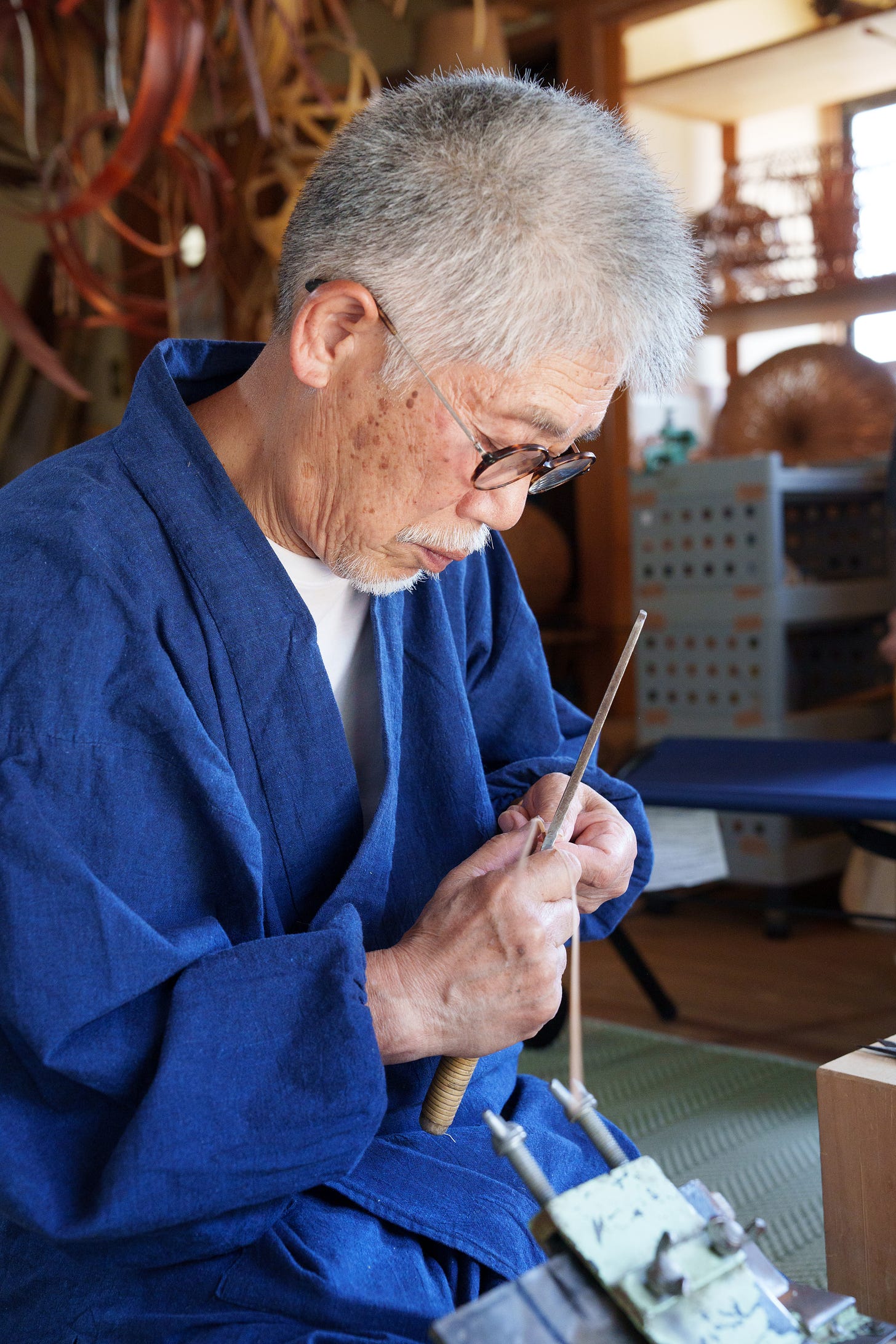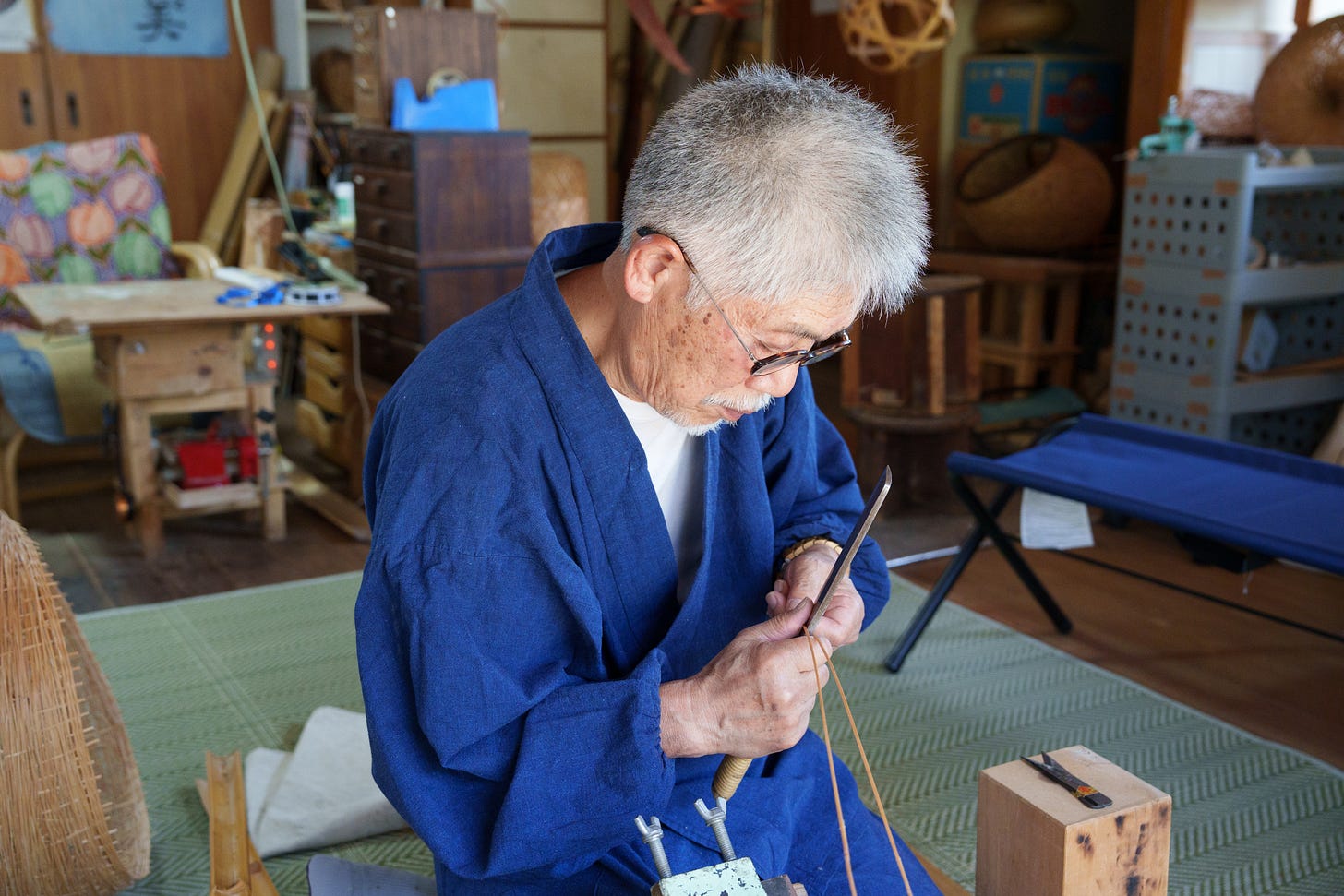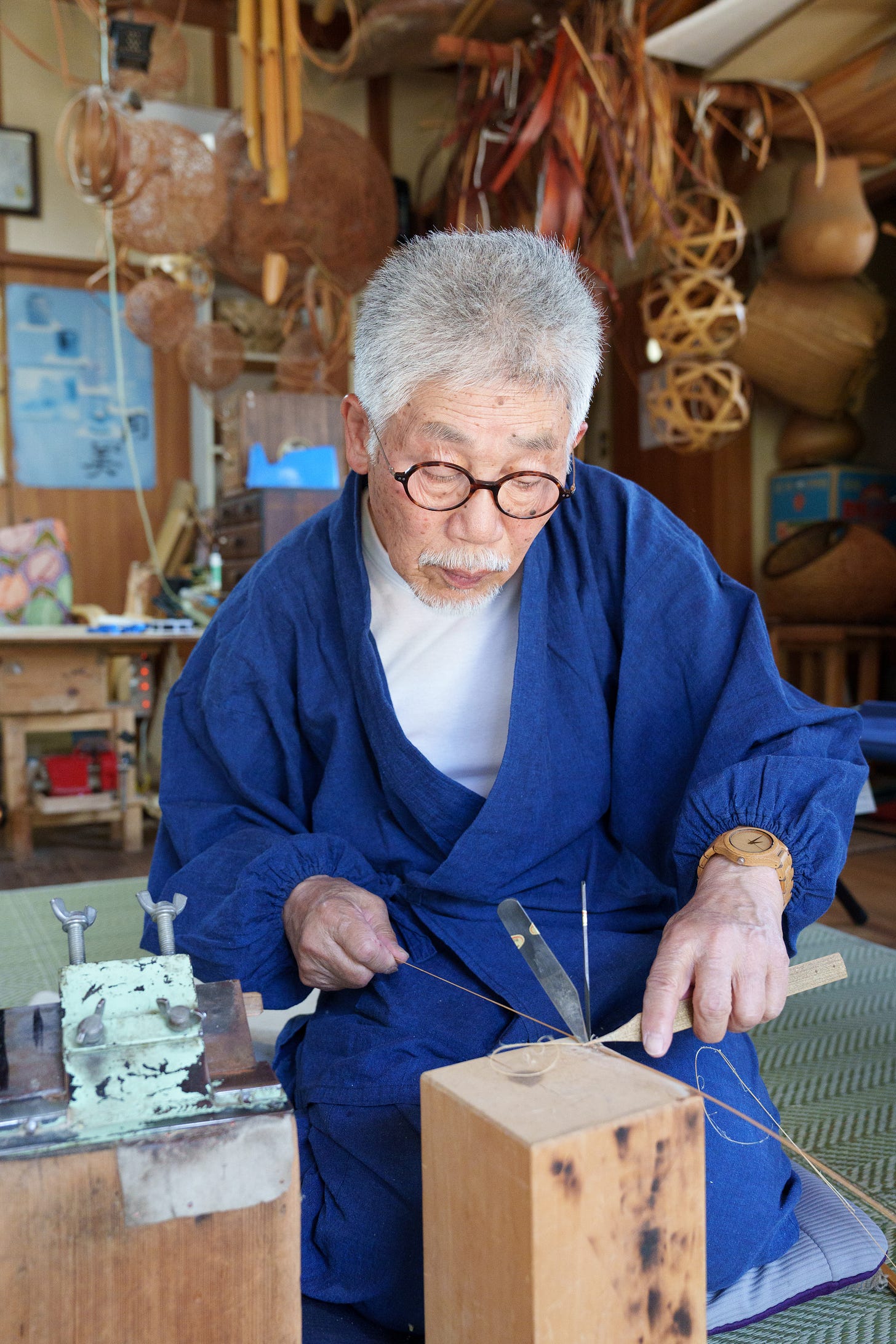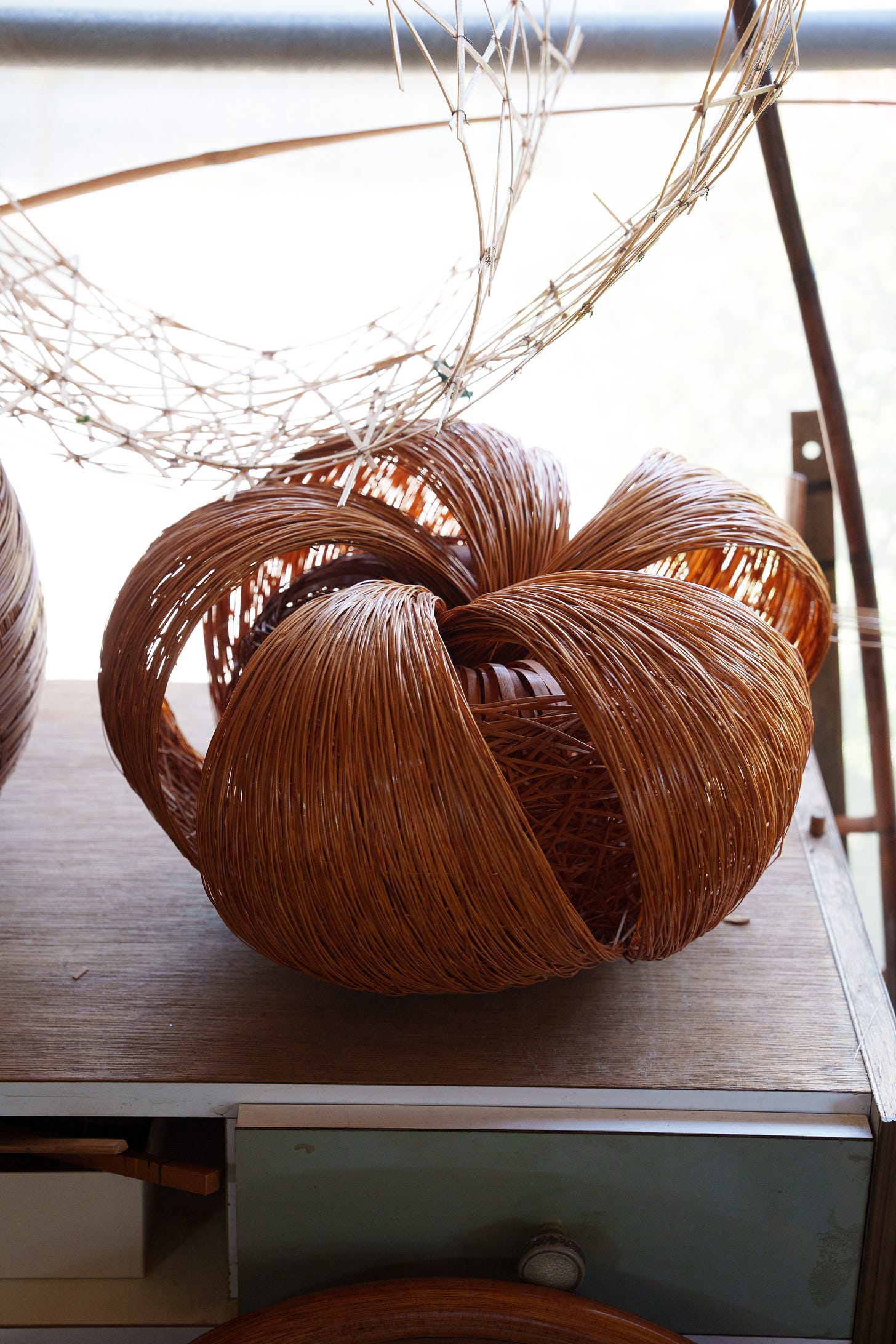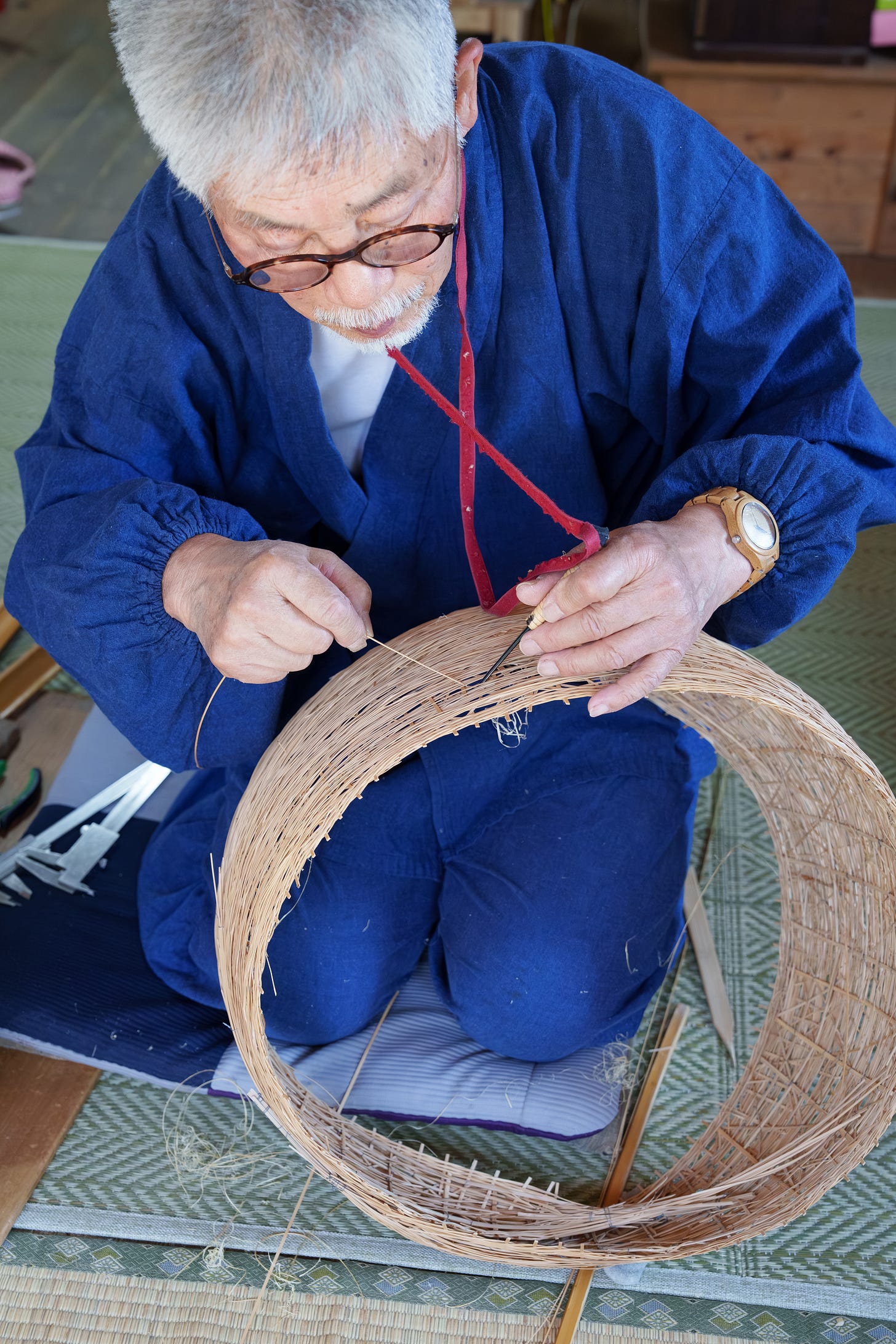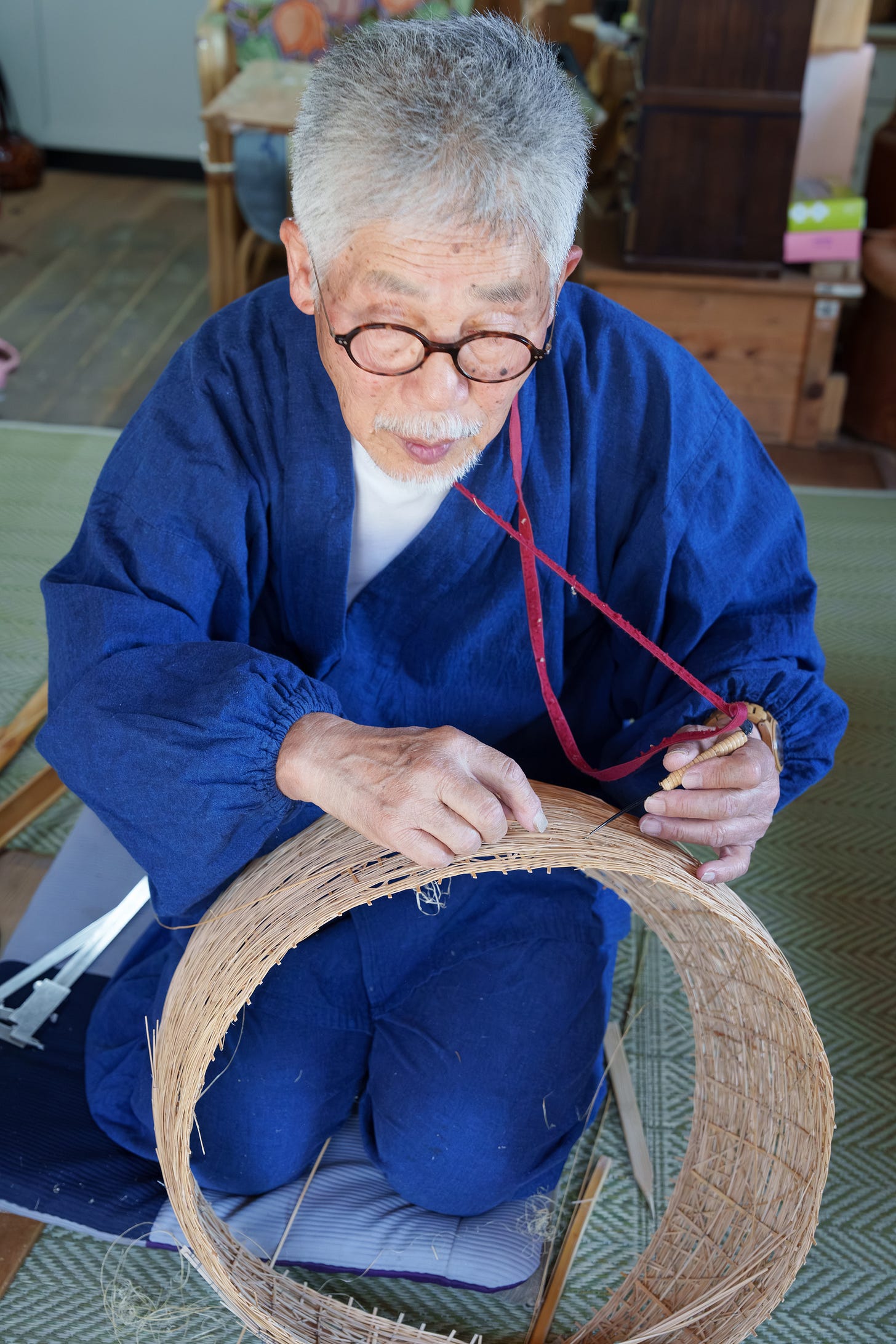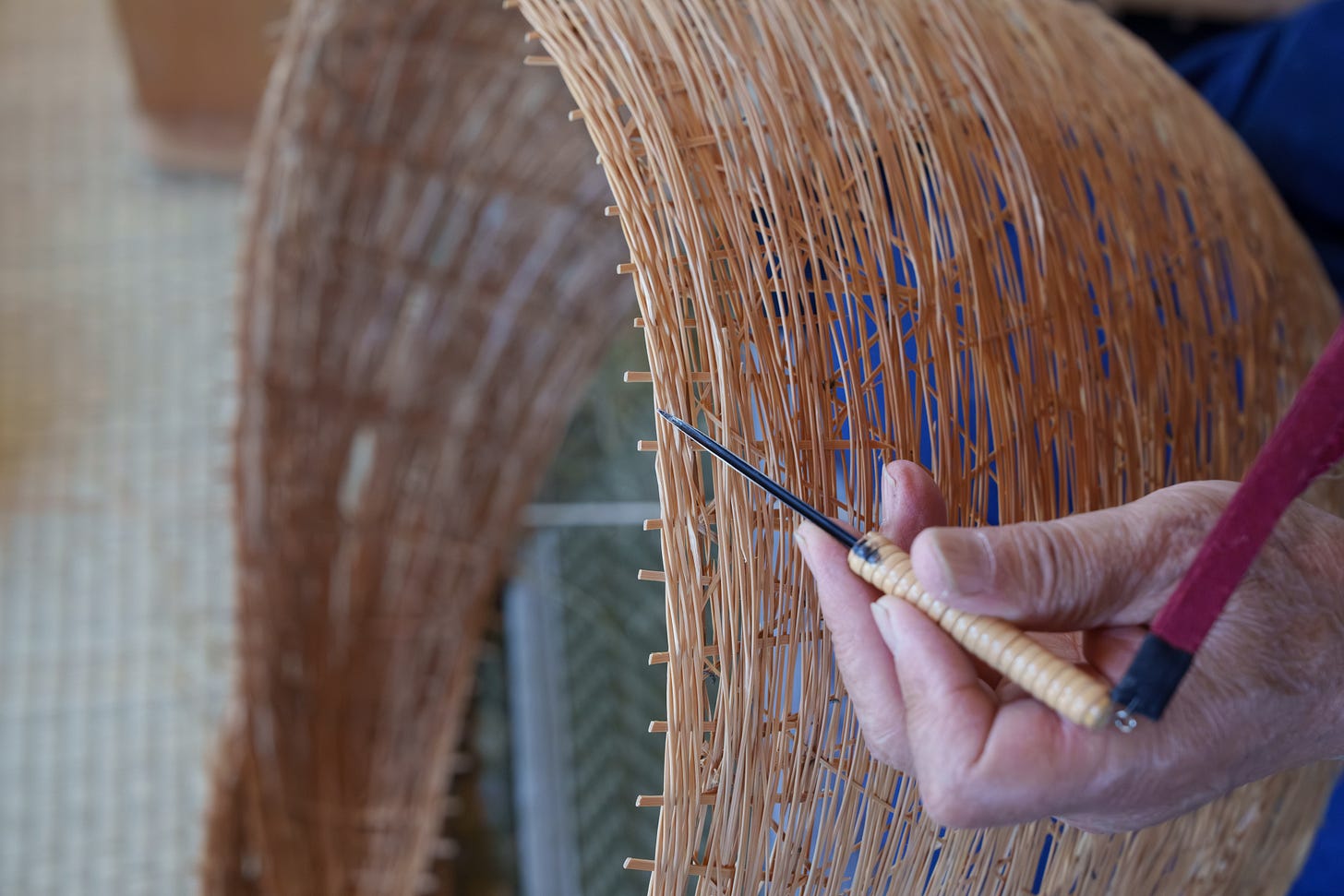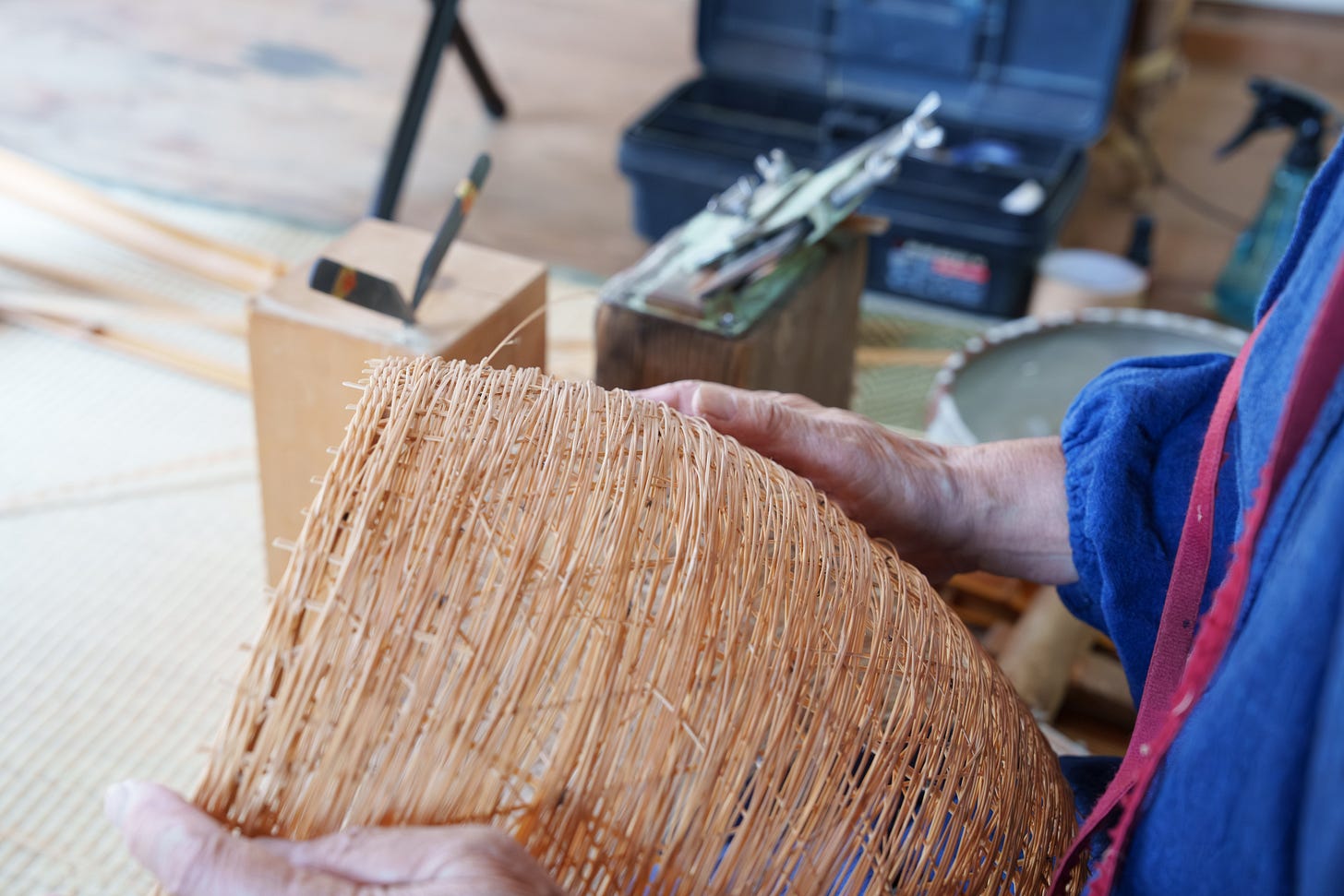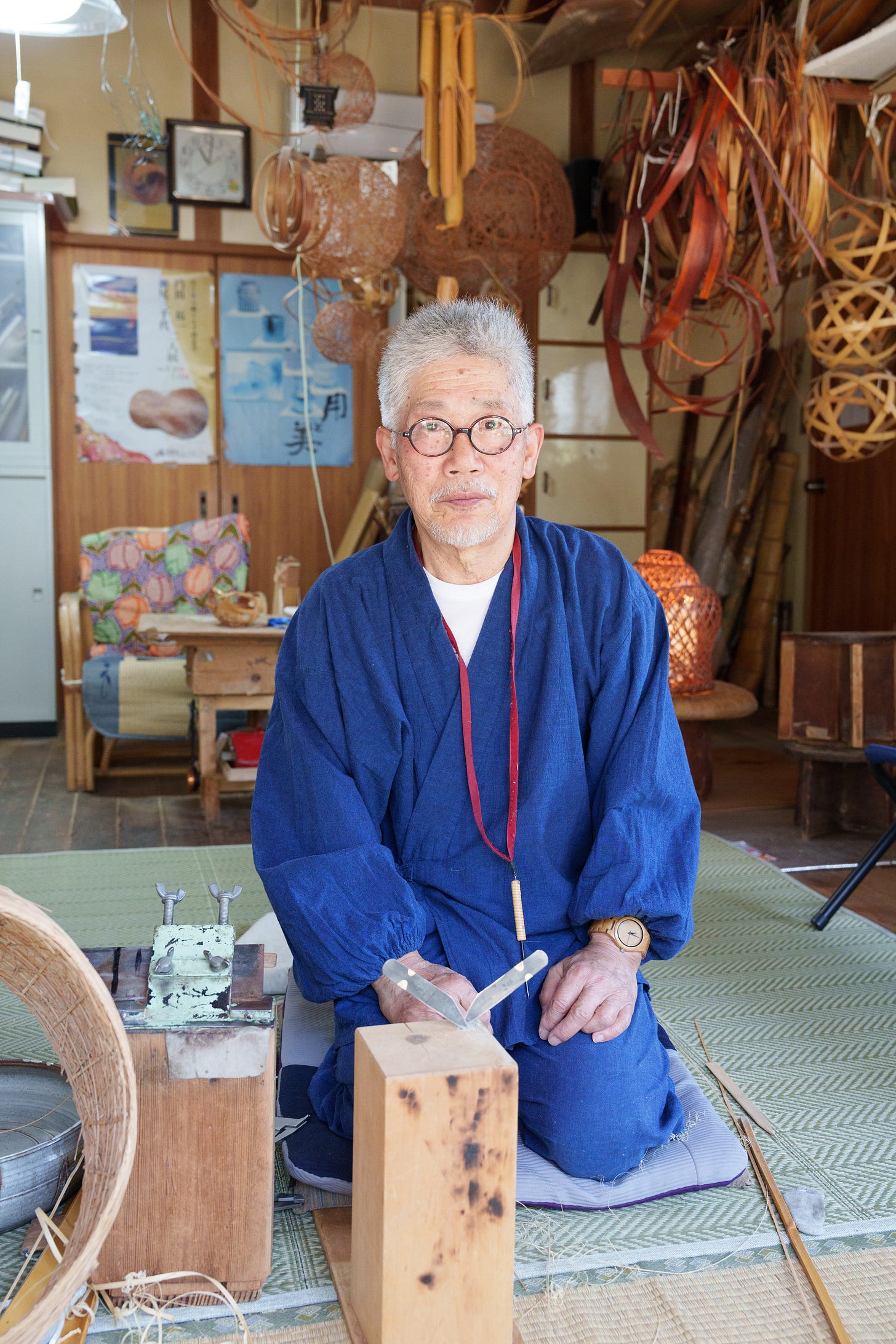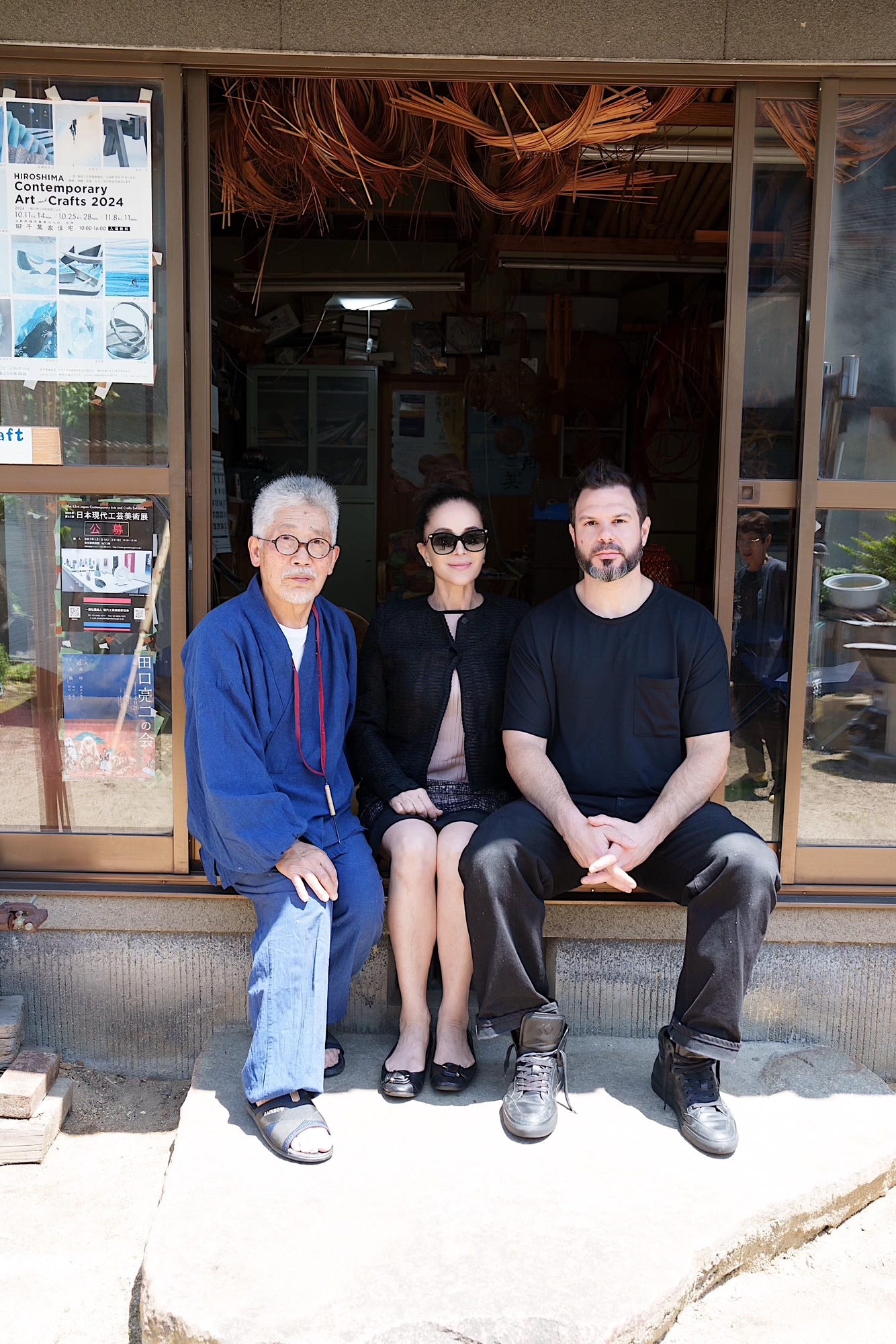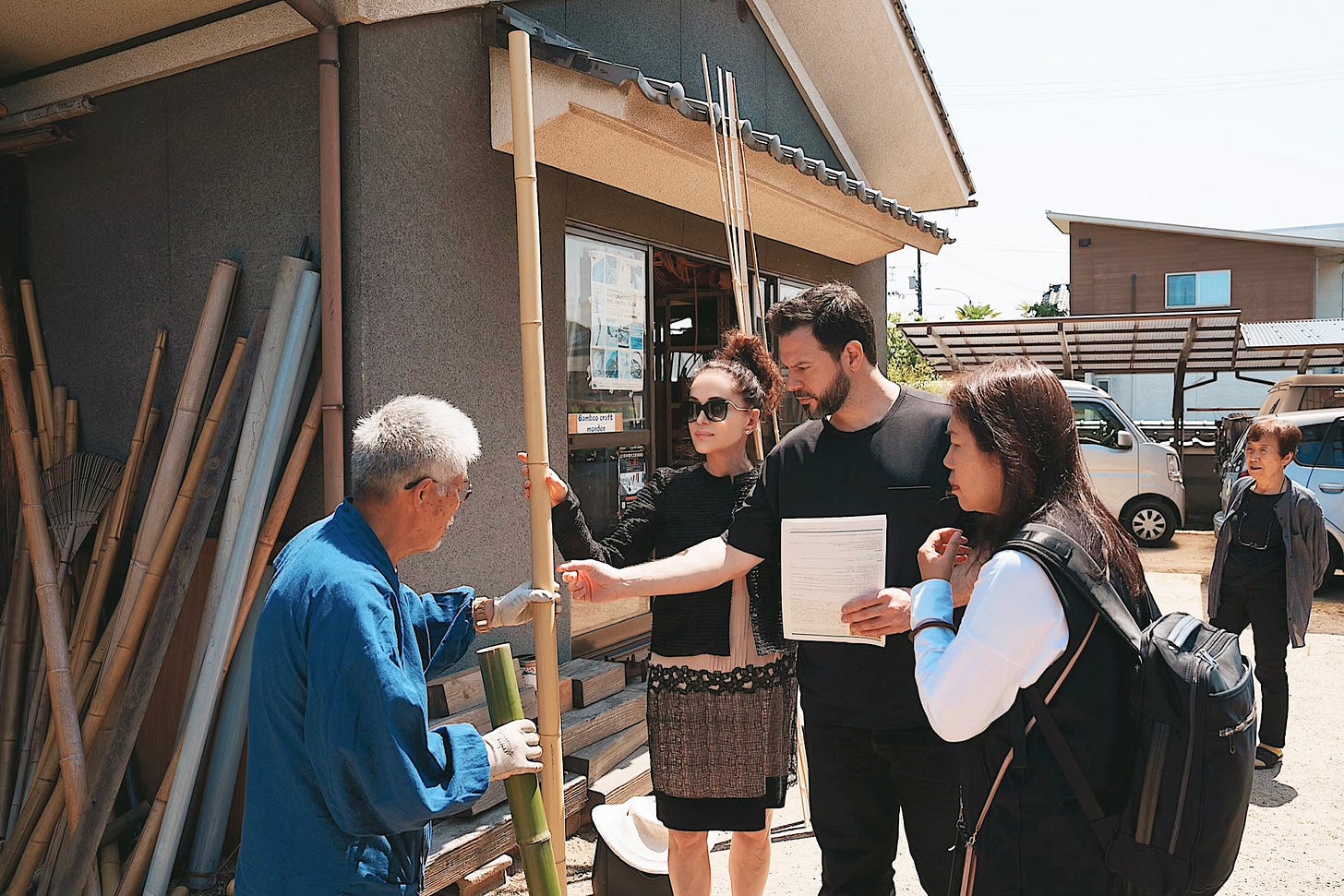Twisting Traditions
Yuichi Monden: The Sculptural face of Bamboo Art
Twisting Traditions
One of the most remarkable achievements of contemporary Japanese kogei, and one which sets it apart from historical practices of the craft, is the notion of twisting traditions and established practices. It is what has enabled Japanese kogei to transition from a tradition where crafts were exclusively used for everyday utensils to the use of craft mediums to create original contemporary art. While traditions have been central to the craft, practiced generation after generation with little change—tea bowls in clay, boxes in lacquer, an obi (belt for a kimono) in weaving, and baskets in bamboo—Japan’s craftspeople have learned from their ancestors, apprenticed with master craftsmen, and passionately preserved their time-tested methods. In fact, they are expected to continue the inherited traditions.
It is the recent generation of craftspeople that has revolutionized that continuity and shaken this stability. They have begun searching for their personal voice, pushing boundaries and introducing new ideas. While remaining true to the methods of the craft—paying great respect to their heritage—they have introduced daring and fearless new means of expression, thereby becoming participants in the global movement of contemporary art. The craftspeople featured in this section about my journey in Japan have completely transformed traditions, introducing a new spirit and taking the world of Japanese crafts to new horizons.
Yuichi Monden (b. 1942)
In his life and career, bamboo artist Yuichi Monden has manifested the famed saying that ‘artists have to be artists in blood.’ While born into a bamboo-basket-making family and living with bamboo his entire childhood, Yuichi went to study engineering, and it was not until he was 33, while working as a professional engineer, that he found his way to his father’s studio. Although he started his career late, Yuichi has achieved a distinctive voice in the world of Japanese bamboo art, creating complex, non-functional, energetic sculptures in bamboo like no other.
He lives and works at the same studio in the city of Fukuyama-shi in the Hiroshima region, where he grew up and where his legendary father, bamboo artist Monden Kogyoku worked and forged an influential career as one of the most influential artists in postwar Japan, weaving flower baskets in a his own unique method which he calls the ‘rolling weave.’ While using the same unusual method, Yuichi approaches it very differently, twisting tradition and reinterpreting it in a contemporary way, thereby bridging the past and present, as well as heritage and fresh 21st-century expressions.
His father, he says today, discouraged him from pursuing a career as a bamboo artist, just as he has discouraged his own kids from becoming professional artists, for the very same reasons. Living a life of hardship as a bamboo artist in Japan has never been easy. It was clear to him from the moment he decided to become an artist that he ought to find his own voice and to devise a new and fresh expression, even before he knew what that might entail. While his knowledge initially came from watching his father weave bamboo baskets, at 56, he decided to go to school. He moved to Beppu, the mecca of Japanese bamboo, to study at the Bamboo Training Center, Japan’s only such school. Upon graduating, he went to work with a bamboo master before becoming an independent artist.
After our bowls of matcha, Yuichi took me to the garden where he began the process of preparing bamboo for splitting into strips. As he sat in his studio, weaving a sculpture, he told me about the event that marked the turning point at age 33. One night, after his father had gone to sleep, he went into the studio and started working with bamboo. Four decades later, he is regarded as one of Japan’s most renowned artists. Thanks to the discovery of bamboo by the world of contemporary art and his representation by Santa-Fe-based gallery, Tai Modern, he is able to free himself from the traditional basket and to apply the method he learned from his father to making sculptures in a fresh, unexpected way, turning bamboo into an art form. Each sculpture is made of thousands of thin strips of bamboo woven into circles. He uses a small metal needle made from the ribs of an umbrella. Yuichi fell in love with the medium decades ago, and although he was never destined to become an artist, the passion or perhaps the spirit have brought him there. He is still in love with the bamboo, working month after month on each piece, composing his sculptures of various shapes that are put together in the most elegant, intriguing way—the guiding light to his artistry.
Photography by © Takuro Kawamoto.
This visit was made possible by Tai Modern.



